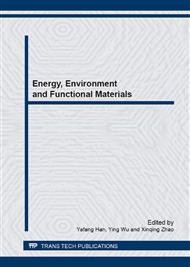p.171
p.176
p.184
p.195
p.198
p.205
p.210
p.215
p.221
Molecular Dynamics Study on Shear Property of Single-Crystal Bi2Te3
Abstract:
The shear property of the thermoelectric material Bi2Te3 is inextricably linked with its layer structure. By the molecular dynamics method, the mechanism of shearing deformation was studied in this paper. In the simulation, cubic single-crystal simulation cells with different layer directions inside were adopted, ensuring that the c axis of crystal lattice can be along, across and 45o deviated from the shear stress. Compared with all the calculation models, the results show that when the shear stress increases, slip occurs along the Te1-Te1 adjacent layers which are connected by the weak van der Waals bonding, and ultimately leads to structural fracture. Furthermore, size effect and loading modes can also impact the behavior of shearing deformation, however, in very different ways. Future efforts should be focused on the influence of the creation and motion of defects during the deformation as well as temperature effect and strain rate effect.
Info:
Periodical:
Pages:
198-204
Citation:
Online since:
April 2014
Authors:
Keywords:
Price:
Сopyright:
© 2014 Trans Tech Publications Ltd. All Rights Reserved
Share:
Citation:


